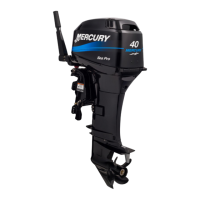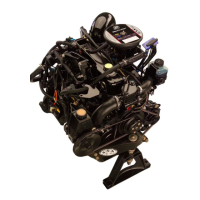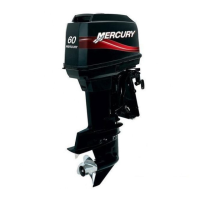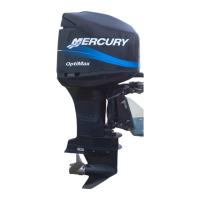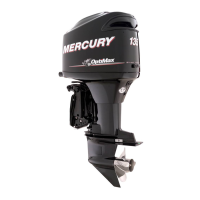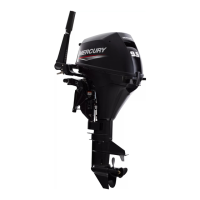The owner/operator is not to modify the engine in any manner that would alter
the horsepower or allow emission levels to exceed their predetermined factory
specifications.
Inspection and Maintenance Schedule
BEFORE EACH USE
•
Check engine oil level. Refer to Checking Engine Oil Level.
• Check that the lanyard stop switch stops the engine.
• Inspect the outboard for tightness to the boat transom. If any looseness of
the outboard or mounting fasteners exist, tighten the outboard mounting
fasteners to the specified torque. When looking for signs of looseness,
look for loss of outboard transom bracket material or paint caused by
movement between the outboard mounting fasteners and the outboard
transom brackets. Also look for signs of movement between the outboard
transom brackets and the boat transom (lift plate/setback bracket).
Description
Nm lb‑in. lb‑ft
Outboard mounting locknuts and
bolts ‑ standard boat transom
75 – 55.3
Outboard mounting locknuts and
bolts ‑ metal lift plates and setback
brackets
122 – 90
• Visually inspect the fuel system for deterioration or leaks.
• Check the steering system for binding or loose components.
• Check the propeller blades for damage.
• Inspect the hydraulic steering fittings and hoses for leaks or damage, if
equipped.
• Inspect the hydraulic steering fluid level, if equipped.
AFTER EACH USE
• Flush out the outboard cooling system if operating in salt, polluted, or
muddy water. Refer to Flushing the Cooling System.
• Wash off all salt deposits and flush out the exhaust outlet of the propeller
and gearcase with fresh water if operating in saltwater.
• If operating in saltwater, inspect the powerhead and powerhead
components for salt buildup. Refer to Cleaning Care for the Powerhead
(Saltwater Use).
EVERY 100 HOURS OF USE OR ONCE YEARLY, WHICHEVER
OCCURS FIRST
•
Inspect the exhaust water strainer. Refer to Exhaust Water Strainer
Inspection.
MAINTENANCE
eng 49
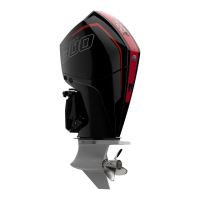
